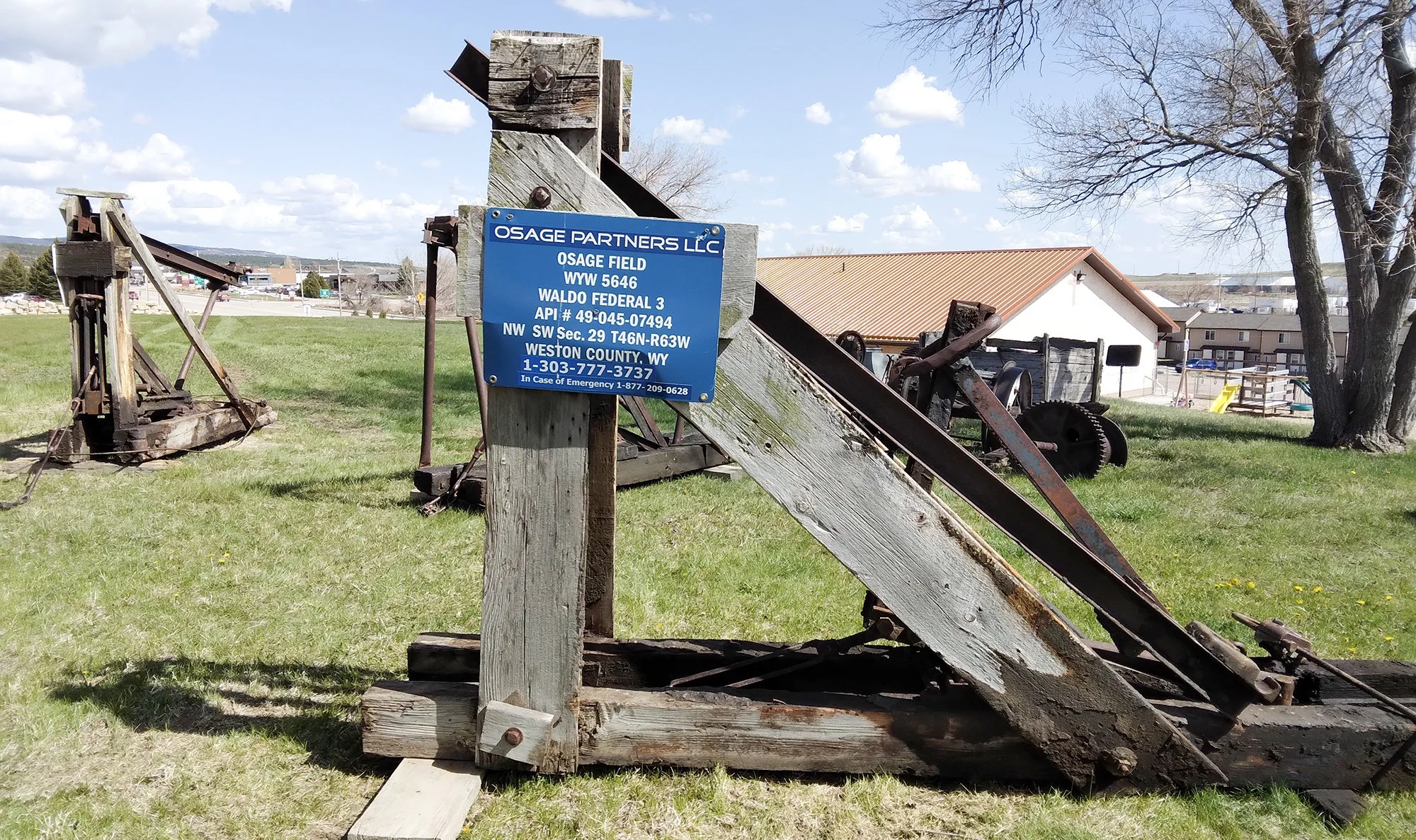VISIT HISTORIC OSAGE
Present day Osage, Wyoming, began as a stop along the Burlington Railroad, known as Apostol Depot. In 1910 John Nefsy discovered oil on Poison Creek and, by 1913, Nefsy and others located it as a claim. That same year he bought land where much of the town of Osage existed.
Located in the Osage Oil Field in northeastern Wyoming is the historical field known as the “Waldo.” Drilled in 1919, these three remaining pump jacks are in remarkable condition considering their age. These are an example of the old-style “Oklahoma Jacks,” which were powered by a central power unit which was connected by a rod system.
In March 1920 a well was drilled in the Osage Oil Field, and it was a gusher. From that point forward, people started moving into the Osage area. There were three town sites picked next to the Apostol Depot: Sparks to the south; Osage to the north; and Nefsy was central.
In April, the Nefsy brothers petitioned to have the town’s legal name changed to Nefsy. The petition was sent to the postmaster general in Washington, D.C. The legal name was changed to Nefsy, but Mr. Higgins, the postmaster, did not like this. In the middle of the night, he moved the post office to the Osage town site.
In November, a new petition was sent to the postmaster general and the legal name was once again changed, this time to Osage. The little town boomed, soon boasting three hotels, a lumber company, a feed store, grocery stores, cafes, a drug store, a bath house, a bank and a newspaper.
But the oil rush did not last long, as larger oil reserves were found in the southern part of the state. By 1924, the population decreased as businesses closed and people moved to find other employment.
Power and Light to increase its production. Osage was
chosen as it was close to an old abandoned artesian well and close to the railroad tracks. The power plant was in operation for 62 years. It closed in October 2010 due to dslow economic recovery that impacted demand for electricity.
Today, Osage remains a quiet little community with a population of about 150 people.
In 1928, the Clay Spur bentonite plant was constructed a few miles west of Osage. Bentonite is volcanic clay, and Wyoming contains some of the largest deposits in the world. Also known as the “clay of a thousand uses,” bentonite was used extensively in the oilfield. The mud made from the bentonite acts as a lubricant and aids in removing debris in the oil well.
Other bentonite uses include lining dams and reservoirs, kitty litter and even in cosmetics, just to name a few. The bentonite plant eventually closed in the 1970s due to the low quality of the remaining reserves of clay at the site.
In 1948, Black Hills Power built a coal-fired power plant on the north side of the highway next to Osage. During World War II the growth of the Black Hills area and the increased demand for electricity made it necessary for Black Hills
A gusher on the Osage Oil Field.



